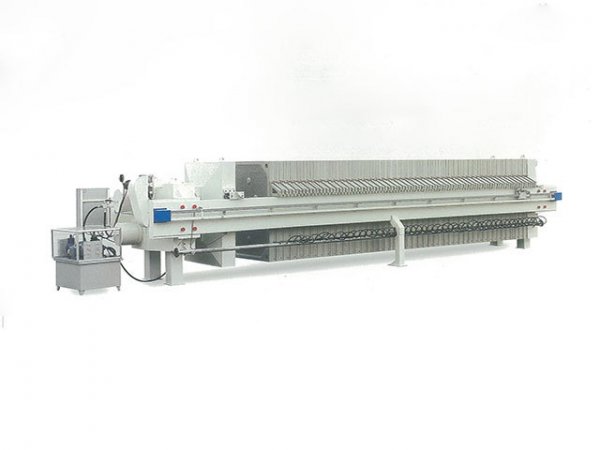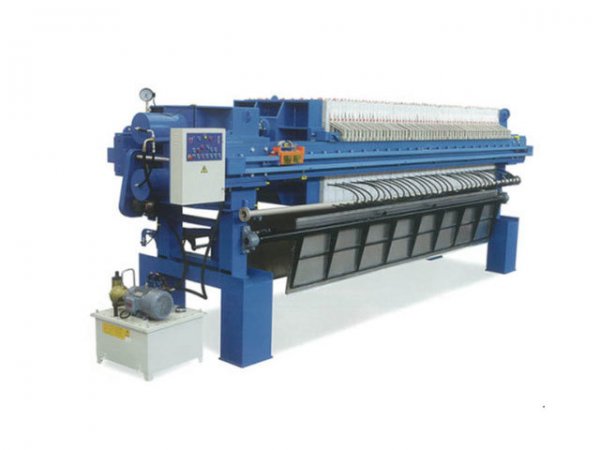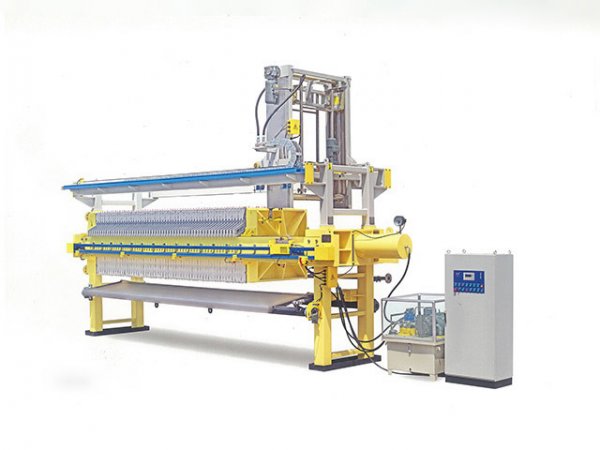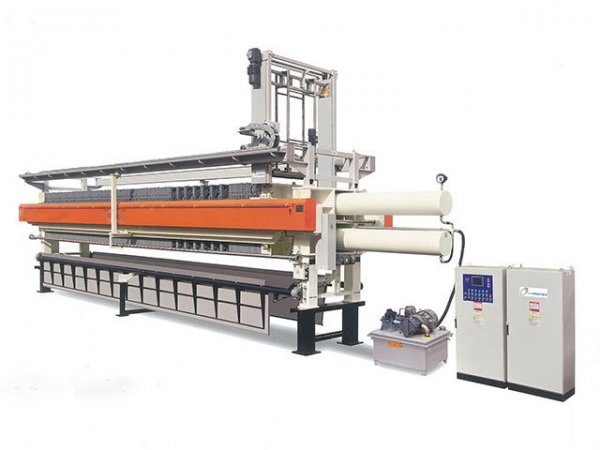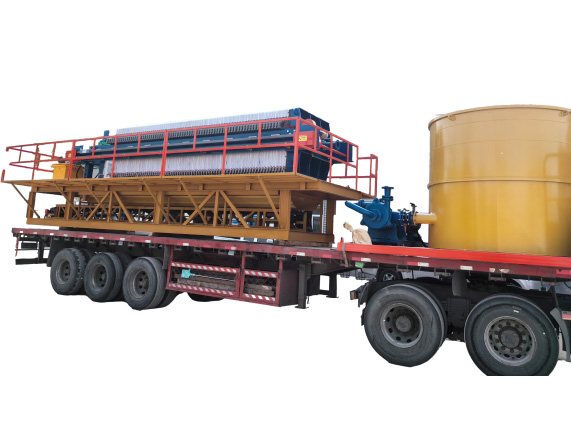NewsDetails
Common Leakage Problems and Solutions of Hydraulic Chamber Filter Press
author:Shuangcheng time:2025-03-21 23:22:58 Click:190
1. Introduction
The hydraulic chamber filter press is a widely used piece of equipment in industries such as mining, chemical engineering, and wastewater treatment for solid - liquid separation. However, leakage problems can occur during its operation, which not only affect the normal operation of the equipment but also may cause environmental pollution and material waste. This article focuses on analyzing the common leakage problems of hydraulic chamber filter presses and proposing corresponding solutions.
2. Common Leakage Locations and Causes
2.1 Filter Plate Joints
Causes:
Worn - out Gaskets: The gaskets between filter plates are crucial for sealing. After long - term use, due to the continuous squeezing and friction from the filter plates and the pressure of the slurry, the gaskets may wear out, lose their elasticity, and fail to form a tight seal.
Incorrect Installation: If the filter plates are not installed correctly, for example, not being aligned properly, the gaskets may not be evenly compressed. This can lead to gaps at the joints, allowing the slurry or filtrate to leak.
Damage to Filter Plates: Physical damage to the filter plates around the joints, such as cracks or chips, can also disrupt the seal and cause leakage.
2.2 Hydraulic System Components
Causes:
Seal Failure in Hydraulic Cylinders: Hydraulic cylinders are an important part of the hydraulic system that provides the pressure for filtration and squeezing. The seals in the hydraulic cylinders, such as piston seals and rod seals, can wear out over time due to high - pressure hydraulic fluid flow and mechanical friction. Once the seals are damaged, hydraulic fluid will leak, reducing the pressure of the hydraulic system and affecting the normal operation of the filter press.
Loose Pipe Fittings: The pipes in the hydraulic system connect various components. If the pipe fittings are not tightened properly during installation or become loose during operation due to vibration, hydraulic fluid can leak from these connections.
Damaged Hoses: Hydraulic hoses are used to transfer hydraulic fluid. They may be damaged by external factors such as abrasion, bending fatigue, or exposure to high temperatures and chemicals. When a hose is damaged, it will cause hydraulic fluid leakage.
2.3 Feed and Discharge Ports
Causes:
Worn - out Seals: Similar to the gaskets between filter plates, the seals at the feed and discharge ports can also wear out due to the continuous flow of slurry or filtrate. The abrasive nature of the slurry can accelerate the wear of the seals, leading to leakage.
Improper Connection: If the connection between the feed or discharge pipes and the ports is not tight, or if there are misalignments in the flanges, it will create gaps for leakage.
3. Solutions
3.1 Solutions for Filter Plate Joint Leakage
Regular Gasket Inspection and Replacement:
Set up a regular inspection schedule for the gaskets between filter plates. Inspect the gaskets for signs of wear, such as thinning, cracks, or loss of elasticity.
When replacing gaskets, choose high - quality gaskets that are suitable for the type of slurry and the operating conditions of the filter press. Ensure proper installation, making sure the gaskets are evenly placed in the grooves of the filter plates.
Correct Filter Plate Installation:
Before installation, carefully check the filter plates for any damage. If there are damaged filter plates, repair or replace them in a timely manner.
During installation, use alignment tools to ensure that the filter plates are precisely aligned. Follow the installation instructions provided by the equipment manufacturer to ensure that the filter plates are installed correctly and the gaskets are evenly compressed.
3.2 Solutions for Hydraulic System Component Leakage
Seal Replacement in Hydraulic Cylinders:
When detecting a leak in the hydraulic cylinder, first, stop the operation of the filter press and relieve the pressure in the hydraulic system.
Disassemble the hydraulic cylinder according to the correct procedure and carefully remove the worn - out seals. Replace them with new seals of the same type and 规格. After replacement, reassemble the hydraulic cylinder and test it to ensure there are no leaks.
Tightening Pipe Fittings and Hose Replacement:
Regularly check the tightness of all pipe fittings in the hydraulic system. Use appropriate tools to tighten the fittings if they are found to be loose.
For damaged hoses, immediately replace them with new hoses that meet the requirements of the hydraulic system in terms of pressure resistance, flexibility, and chemical resistance. During the replacement process, make sure to properly connect the new hoses and secure the fittings.
3.3 Solutions for Feed and Discharge Port Leakage
Seal Replacement at Ports:
Shut off the feed and discharge valves before replacing the seals at the ports. Remove the old seals and clean the port surfaces thoroughly.
Install new seals, ensuring a proper fit. Use sealants if necessary to enhance the sealing effect. After replacement, test the ports for leakage by running a small - scale operation of the filter press.
Proper Connection of Pipes:
Check the alignment and tightness of the flanges or other connection methods between the pipes and the ports. If there are misalignments, adjust them.
Tighten the bolts or connectors of the pipe connections to the required torque. Use gaskets or sealants appropriate for the type of slurry and the connection to ensure a tight seal.
4. Preventive Measures
Regular Maintenance: Establish a comprehensive regular maintenance program for the hydraulic chamber filter press. This includes not only inspecting and replacing worn - out parts but also cleaning the equipment, lubricating moving parts, and checking the overall performance of the equipment.
Operator Training: Provide in - depth training for operators to ensure they are familiar with the correct operation procedures of the filter press. Operators should be trained to recognize early signs of leakage and take appropriate measures in a timely manner.
Quality Control of Spare Parts: When purchasing spare parts such as gaskets, seals, and hoses, ensure their quality. Choose parts from reliable suppliers that meet the standards and requirements of the filter press.
5. Conclusion
Leakage problems in hydraulic chamber filter presses can be effectively addressed through a combination of accurate problem diagnosis, appropriate solutions, and preventive measures. By paying attention to the common leakage locations and causes, and taking proactive steps to solve and prevent them, the normal operation of the filter press can be ensured, reducing production losses and environmental impacts. Regular maintenance and operator training are also essential for the long - term and stable operation of the equipment.
 Recommended Products
Recommended Products
 Contact us
Contact us
—— Contact:Manager
—— Tel:+86 16632826789
—— Email:sales@hbscfilterpress.com
—— Url:http://www.hbscfilterpress.com
—— Address:West Zone of Economic Development Zone, Fucheng County, Hengshui City, Hebei Province



